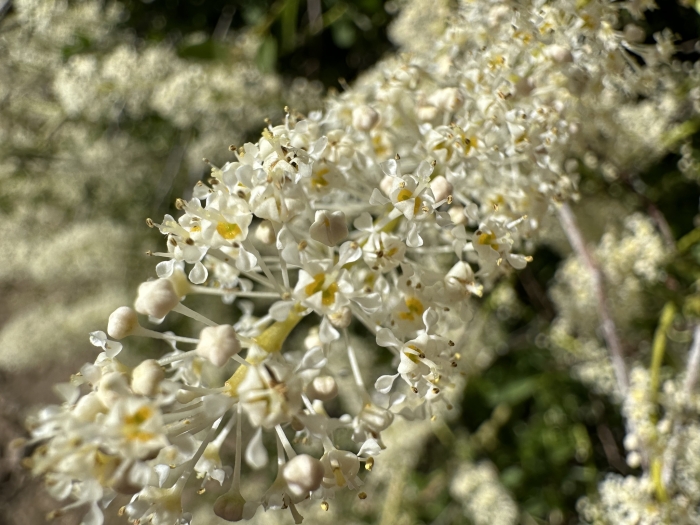Palmer’s Ceanothus
(Ceanothus palmeri)
Palmer’s Ceanothus (Ceanothus palmeri)
/
/

© Eric Alan Isaacson
CC BY 4.0
Image By:
© Eric Alan Isaacson
Recorded By:
Copyright:
CC BY 4.0
Copyright Notice:
Photo by: © Eric Alan Isaacson | License Type: CC BY 4.0 | License URL: http://creativecommons.org/licenses/by/4.0/ | Uploader: eaisaacson | Publisher: iNaturalist |
























Estimated Native Range
Summary
Ceanothus palmeri, commonly known as Palmer’s Ceanothus or Palmer’s Lilac, is a perennial shrub that is native to the chaparral and coastal sage scrub of Southern California and Baja California. It typically grows rapidly to a height and width of 6-12 feet (1.8-3.7 meters). Palmer’s Ceanothus has a dense, rounded form with dark green, glossy leaves. Its flowers are a striking blue and quite showy, blooming profusely in the spring and attracting pollinators such as bees and butterflies. The shrub may also produce small, capsule-like fruits that are not particularly ornamental.
Palmer’s Ceanothus is valued for its drought tolerance and ability to thrive in poor soils, making it an excellent choice for water-wise gardens and natural landscaping. It is often used for slope stabilization, habitat restoration, and as an ornamental in residential gardens. This shrub requires minimal maintenance once established and is resistant to many pests and diseases. However, it can be susceptible to root rot if overwatered or planted in poorly draining soils. It is best to avoid heavy pruning, as this can reduce flowering and potentially harm the plant.CC BY-SA 4.0
Palmer’s Ceanothus is valued for its drought tolerance and ability to thrive in poor soils, making it an excellent choice for water-wise gardens and natural landscaping. It is often used for slope stabilization, habitat restoration, and as an ornamental in residential gardens. This shrub requires minimal maintenance once established and is resistant to many pests and diseases. However, it can be susceptible to root rot if overwatered or planted in poorly draining soils. It is best to avoid heavy pruning, as this can reduce flowering and potentially harm the plant.CC BY-SA 4.0
Plant Description
- Plant Type: Shrub
- Height: 6-12 feet
- Width: 6-12 feet
- Growth Rate: Rapid
- Flower Color: Cream, White
- Flowering Season: Spring, Summer
- Leaf Retention: Evergreen
Growth Requirements
- Sun: Full Sun, Part Shade
- Water: Very Low
- Drainage: Medium, Fast
Common Uses
Bee Garden, Butterfly Garden, Drought Tolerant, Erosion Control, Low Maintenance, Showy Flowers, Street Planting
Natural Habitat
Chaparral and coastal sage scrub of Southern California and Baja California
Other Names
Common Names: Palmer’s Ceanothus, Palmer’s Lilac
Scientific Names: , Ceanothus palmeri, Ceanothus spinosus var. palmeri, Ceanothus spinosus var. palmeri,
GBIF Accepted Name: